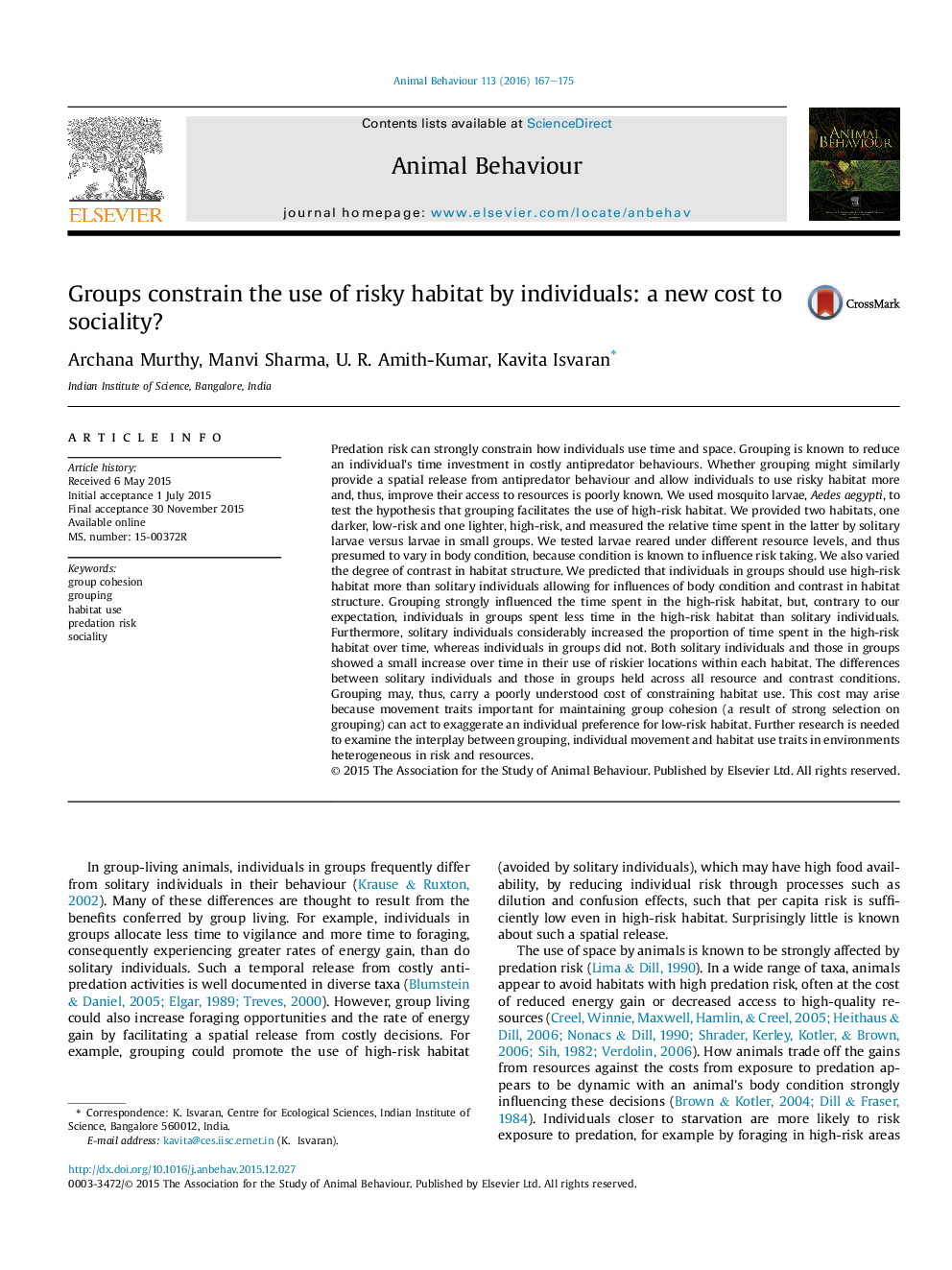| کد مقاله | کد نشریه | سال انتشار | مقاله انگلیسی | نسخه تمام متن |
|---|---|---|---|---|
| 8489263 | 1552215 | 2016 | 9 صفحه PDF | دانلود رایگان |
عنوان انگلیسی مقاله ISI
Groups constrain the use of risky habitat by individuals: a new cost to sociality?
ترجمه فارسی عنوان
گروه ها استفاده از زیستگاه خطرناک افراد را محدود می کنند: هزینه جدید برای اجتماعی شدن؟
دانلود مقاله + سفارش ترجمه
دانلود مقاله ISI انگلیسی
رایگان برای ایرانیان
کلمات کلیدی
انسجام گروهی، گروه بندی، استفاده از زیستگاه، رشوه دادن اجتماعی بودن،
موضوعات مرتبط
علوم زیستی و بیوفناوری
علوم کشاورزی و بیولوژیک
علوم دامی و جانورشناسی
چکیده انگلیسی
Predation risk can strongly constrain how individuals use time and space. Grouping is known to reduce an individual's time investment in costly antipredator behaviours. Whether grouping might similarly provide a spatial release from antipredator behaviour and allow individuals to use risky habitat more and, thus, improve their access to resources is poorly known. We used mosquito larvae, Aedes aegypti, to test the hypothesis that grouping facilitates the use of high-risk habitat. We provided two habitats, one darker, low-risk and one lighter, high-risk, and measured the relative time spent in the latter by solitary larvae versus larvae in small groups. We tested larvae reared under different resource levels, and thus presumed to vary in body condition, because condition is known to influence risk taking. We also varied the degree of contrast in habitat structure. We predicted that individuals in groups should use high-risk habitat more than solitary individuals allowing for influences of body condition and contrast in habitat structure. Grouping strongly influenced the time spent in the high-risk habitat, but, contrary to our expectation, individuals in groups spent less time in the high-risk habitat than solitary individuals. Furthermore, solitary individuals considerably increased the proportion of time spent in the high-risk habitat over time, whereas individuals in groups did not. Both solitary individuals and those in groups showed a small increase over time in their use of riskier locations within each habitat. The differences between solitary individuals and those in groups held across all resource and contrast conditions. Grouping may, thus, carry a poorly understood cost of constraining habitat use. This cost may arise because movement traits important for maintaining group cohesion (a result of strong selection on grouping) can act to exaggerate an individual preference for low-risk habitat. Further research is needed to examine the interplay between grouping, individual movement and habitat use traits in environments heterogeneous in risk and resources.
ناشر
Database: Elsevier - ScienceDirect (ساینس دایرکت)
Journal: Animal Behaviour - Volume 113, March 2016, Pages 167-175
Journal: Animal Behaviour - Volume 113, March 2016, Pages 167-175
نویسندگان
Archana Murthy, Manvi Sharma, U.R. Amith-Kumar, Kavita Isvaran,
